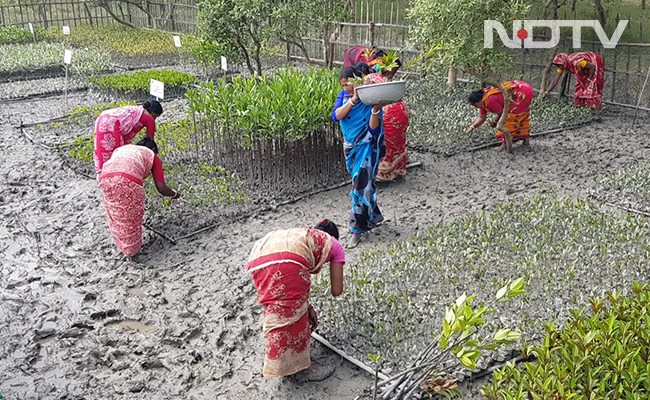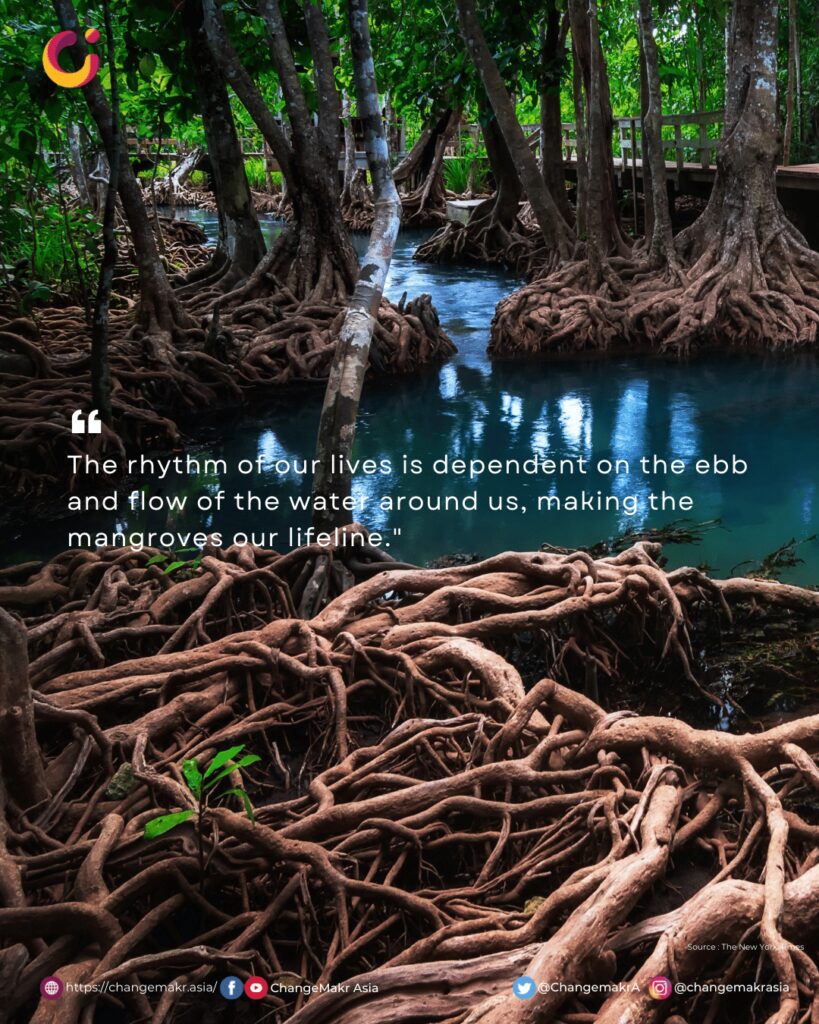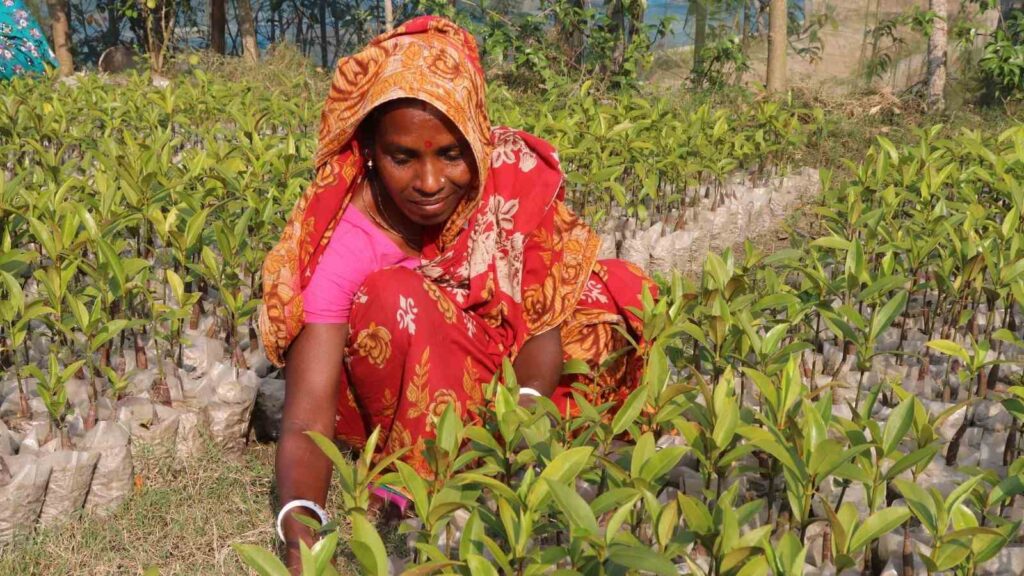Women in coastal communities are leading efforts to mitigate the threat of disappearing mangrove forests while creating livelihood opportunities in Sundarbans, India.
The Sundarbans are an archipelago of islands located in the State of West Bengal in eastern India in the Ganges Delta, stretching into southern Bangladesh. They form the largest contiguous estuarine mangrove forest in the world. Yet its mangroves are rapidly disappearing due to climate change. Experiencing sea-level rise faster than any other place on Earth, the Sundarbans have already lost more than 28 percent of its land in the past 40 years due to global warming.
RELEVANT SUSTAINABLE GOALS


Mangroves and Climate Resilience
The Sundarbans straddle the coastline into neighbouring Bangladesh and are home to some of the world’s rarest creatures, including the Bengal tiger and the Irrawaddy dolphin. The forest has been designated a World Heritage site but has in the past suffered from illegal logging and is regularly battered by intense monsoon storms.
Climate change has intensified storms and pushed saltwater further inland, making the Sundarbans an even more crucial storm shield. Farmers are forced to seek other means of sustenance as soil and water become more saline. People living in precarious and dangerous livelihoods are more likely to be negatively impacted by climate change. Despite being close to the Sundarbans, the world’s largest mangrove forest, the villagers faced an acute shortage of wood for fuel.
Mangroves protect coastlines from erosion and extreme weather events, improve water quality by filtering pollutants, and serve as nurseries for many marine creatures. Mangroves can help fight climate change by sequestering millions of tons of carbon each year in their leaves, trunks, roots and the soil.

Planting Mangroves to Bolster South Asia’s Cyclone Defences
Women in the world’s largest mangrove forest are planting thousands of saplings to protect coastal communities from climate change as cyclones become more powerful.
Sundarbans women have created nurseries and planted hundreds of mangroves in and around their area across Sundarbans. And today, they are reaping the benefits of mangroves in the form of a natural bio-shield, strengthened embankments, and forest products. Mangrove afforestation driven by local women has been possible due to the efforts of NGO Nature Environment and Wildlife Society (NEWS) that made these women green warriors.
After Cyclone Aila in May 2009, the focus of NGO NEWS shifted to mangrove afforestation and community-led mangrove plantation with the message,
If you need to live here, you have to protect the mangroves.
Soon after the NGO mobilised funds, did risk mapping and from July 2010 to 2015, they did mangrove plantation across 183 sites in Sundarbans, covering 4,586 hectares of land. Over the years, 22 more sites have been added, covering an additional 180 hectares of land.
Women are paid by the NGO for planting and nurturing the plants. NEWS’s main goal is to generate income from the mangroves and mangrove value chain once the saplings grow into plants. Mangroves provide villages with honey, crabs, fishes, shrimp, and other nutrients.
During the plantation season, women are paid Rs. 2,500-3,000 every month. After plantation when they go for monitoring then the entire group is paid Rs. 5,000 which means Rs. 500 per head. We have already started working on the value chain – chicken, backyard poultry farming, and kitchen garden. Through this, women contribute to the family income. Women also offer a visit to the nursery to tourists and take care of their food, accommodation, and travel.
Ajanta Dey (Joint Secretary and Programme Director at Nature Environment and Wildlife Society - NEWS)

You may also be interested in :
Sisters of The Moon : Poulomi Basu’s Evocative Photo Series On Climate and Gender


